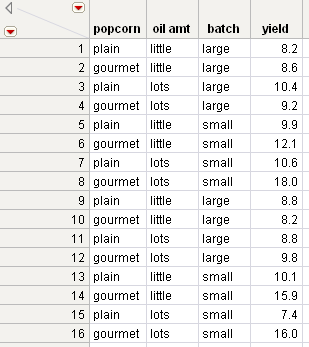|
1.
|
|
2.
|
|
3.
|
|
4.
|
Click OK.
|
The data tables combine into a new concatenated table with all of the rows from the first data table followed by all of the rows from the second data table. See Figure 6.20.
Concatenated data tables always contain a column for every column name found in the original data tables. However, if the column names do not match exactly, they are not merged. For example, if the yield column was instead named yield1 and yield2, a separate column would be created for each in the concatenated data table.

